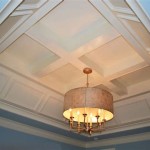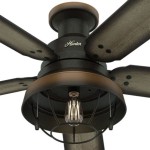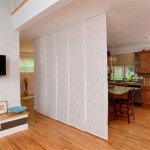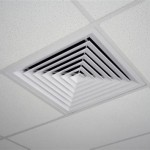When Were Drop Ceilings Invented?
Drop ceilings, also known as suspended ceilings or false ceilings, are a common sight in commercial buildings and even some residential homes. They offer a variety of benefits, including sound absorption, fire resistance, and easy access to utilities. But when were drop ceilings invented, and who is responsible for their creation?
The Invention of the Drop Ceiling
The first drop ceiling was invented in 1897 by a man named Frederick Whynman. Whynman was a British engineer who worked for the company G. Tingey & Co. He was tasked with finding a way to improve the acoustics in a new office building. At the time, most ceilings were made of plaster, which was not very effective at absorbing sound.
Whynman's solution was to create a ceiling made of perforated metal tiles. These tiles were suspended from the ceiling by wires. The space between the tiles and the ceiling allowed sound to be absorbed and dissipated.
The Development of Drop Ceilings
Whynman's invention was a success, and drop ceilings quickly became popular in commercial buildings. In the early 20th century, drop ceilings were made of a variety of materials, including metal, wood, and fiberboard. By the mid-20th century, drop ceilings were being used in residential homes as well.
Today, drop ceilings are a common sight in a variety of buildings. They are often used in offices, schools, hospitals, and other commercial spaces. Drop ceilings are also used in some residential homes, especially in basements and other areas where sound absorption is important.
The Benefits of Drop Ceilings
Drop ceilings offer a number of benefits, including:
- Sound absorption: Drop ceilings can help to absorb sound and reduce noise levels in a room.
- Fire resistance: Drop ceilings can be made of fire-resistant materials, which can help to slow the spread of fire in a building.
- Easy access to utilities: The space between the drop ceiling and the ceiling allows for easy access to utilities, such as electrical wires and plumbing pipes.
- Versatility: Drop ceilings can be used in a variety of applications, from commercial buildings to residential homes.
- Cost-effective: Drop ceilings are a relatively cost-effective way to improve the acoustics, fire resistance, and aesthetics of a room.
Conclusion
Drop ceilings are a versatile and cost-effective way to improve the acoustics, fire resistance, and aesthetics of a room. They have been used in commercial buildings for over a century, and they are now becoming increasingly popular in residential homes as well.

Dropped Ceiling Wikipedia

Everything You Need To Know About Drop Ceiling

Is A Drop Ceiling The Acoustical Prosoundweb

Diy Coffered Ceilings With Moveable Panels Renovation Semi Pros

Coffered Ceiling Ceilings Armstrong Residential

Basement Drop Ceiling Tiles Total Finishing

Suspended Ceiling Mineral Fiber Ceilings Armstrong Residential

How To Install A Drop Ceiling

Old Dated Ceiling Tile No Problem Pink Little Notebookpink Notebook

Diy Coffered Ceilings With Moveable Panels Renovation Semi Pros
Related Posts








